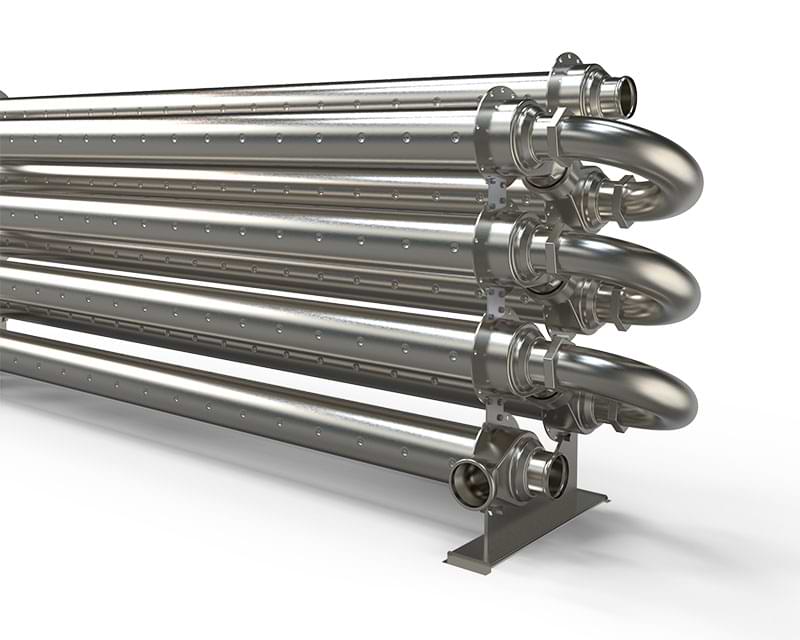Tube-in-Tube Exchangers
The design of the sanitary tube-in-tube heat exchanger is relatively simple yet highly effective; one fluid flows through the inner tube while the second fluid flows through the annular space between the inner and outer tube. The concentric arrangement allows for efficient heat transfer, as the surface area per unit volume is relatively large.
- Certified: Units built to 3A standards available, meeting stringent sanitary standards and regulations.
- Easy to Use: Great for applications with limited space, or needing easy disassembly for maintenance.
- Fluid Types: Our tubular heat exchangers are ideal for low and medium viscosity fluids or those containing suspended particles.
- Materials: Available materials include austenitic stainless steels, high temperature steels, exotic alloys, titanium alloys, and more.
- Custom Builds: Our expert design engineers can produce exchangers for almost any applicaiton.
- Ratings: Our units have temperature ratings up to 350C and are capable of pressures upwards of 350 psi.

Sanitary Tube-in-Tube
High Quality Heat Transfer Solutions
The construction of these sanitary heat exchangers is robust and straightforward, making them suitable for a wide range of temperatures and pressures. The simplicity of their design lends itself to easier cleaning and maintenance, as well as adaptability to accommodate various flow arrangements — such as countercurrent or concurrent flow — in order to optimize heat exchange.
- Compact and Versitile
- Capable of Condensing and Evaporating
- High Flow Rates
- Customizable Nozzles and Connections
- Low Maintenance Costs
- Easy Disassemmbly for Cleaning
Sanitary Tube-in-Tube Exchangers
Tube-in-tube heat exchangers are favored for sanitary applications where the fluids may contain particles that could clog or damage other types of heat exchangers, and in settings where aggressive cleaning might be required periodically.
Efficient heat transfer is critical in industrial and sanitary applications alike, and tube-in-tube heat exchangers deliver this through careful engineering that maximizes the contact time between the fluids and the surface area over which the heat is exchanged. The materials used in manufacturing are selected based on the specific needs of the application, including resistance to thermal expansion, corrosion, fouling, and chemical reactions with the substances being heated or cooled. This selection ensures longevity and functional integrity in the demanding environments where these systems operate.
Industries such as dairy, pharmaceutical, and food processing, where a high degree of reliability and efficiency is required, commonly employ these heat exchangers. Furthermore, their application is not only confined to heating or cooling processes but also extends to condensing and evaporating operations. The thermal efficiency and practical design of tube-in-tube heat exchangers make them an indispensable component in the fluid process world.


